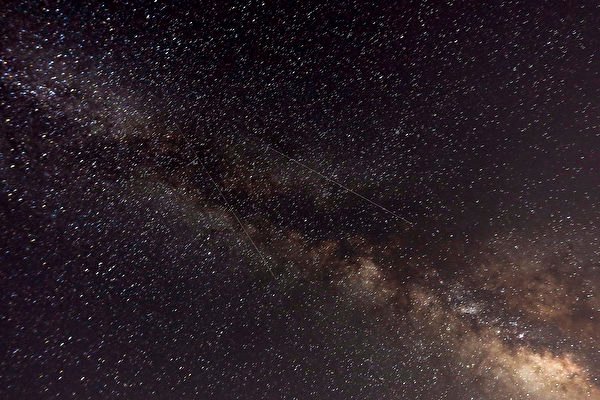Did you ever make a wish upon a star in the sky, hoping for it to come true? Well, some say that many of the stars we see are actually already dead, so our wishes may not be fulfilled. In response to this, experts have written articles explaining the phenomenon and even provided a list of stars that people can still wish upon.
Dr. Laura Nicole Driessen, a postdoctoral researcher in radio astronomy at the University of Sydney in Australia, addressed this topic in an article on The Conversation website. Recently, there have been claims on social media that when you wish upon a star, you are actually too late by a million years. That star has already perished, just like your dream.
As an astronomer, Driessen is keen to inform people that the stars we see in the night sky are much closer and live longer than we imagine. It’s highly unlikely that you are wishing upon a star that is already dead.
When someone pours cold water on your wish by saying the star you wished upon is dead, they usually start by mentioning that the star is “hundreds of thousands of light-years away.” This means that the light from the star has traveled for millions of years before reaching your eyes, indicating that it may have aged millions of years and possibly already died.
However, the stars that we see with our naked eyes are all within the Milky Way galaxy and not that far away. The Milky Way spans about 100,000 light-years, and the solar system is approximately 26,000 light-years from the center of the galaxy.
Therefore, if you see stars at the edge of the Milky Way galaxy, they are at most 74,000 light-years away from Earth, not millions of light-years.
In fact, the stars visible to us are even closer. In a moonless pitch-black night sky, the faintest star visible to the naked eye has an apparent magnitude of about 6.5.
Brighter stars have lower magnitudes, while dimmer stars have higher magnitudes. The brightest star in the Southern Cross constellation has a magnitude of 0.8, while the dimmest star has a magnitude of 3.6.
An apparent magnitude of 6.5 limits the visible light intensity to stars that are approximately 10,000 light-years away from Earth. So, if you happen to wish upon a star that is relatively distant, the light would still take 10,000 years to reach your eyes.
Assuming wishes travel at the speed of light, it would take another 10,000 years for it to reach that star. Therefore, even for the farthest visible star, when your wish arrives, its age would only be around 20,000 years.
So, do stars live beyond 20,000 years?
Driessen mentions the Yale Bright Star Catalogue, which lists stars with magnitudes greater than 6.5. It contains 9,096 stars with magnitudes greater than 7, about the limit of what can be seen with the naked eye.
Many of these stars (40%) are giant stars, falling into three categories—normal giants, bright giants, and supergiants.
The lifespan of a star decreases as its mass increases. So, these giant stars may not live very long, but they still have tens of thousands of years ahead of them, much longer than 20,000 years.
The rest of the visible stars are classified as main-sequence stars and subgiants. They have much longer lifespans, reaching billions of years. Therefore, when it comes to wishes, the age of a star is just a (very large) number.
Driessen suggests that if you are concerned about wishing upon a dead star, you can choose a closer star.
Alpha Centauri, also known as Rigil Kentaurus, is the closest star to Earth outside the solar system and the fourth-brightest star in the sky. It is only about 4 light-years away from Earth. Its lifespan is certainly longer than the 8 years it takes for its light to reach you and your wish to reach it.
The brightest star in the sky, Sirius, is a main-sequence star located just 8.6 light-years away from Earth. Epsilon Eridani, or Ran, is about 10 light-years away from the Earth. Similar to our Sun, it is less than a billion years old. Both Sirius and Epsilon Eridani have entered middle age and still have millions, or even billions, of years ahead of them.
As for the safest star to wish upon, Driessen recommends our own Sun. The Sun is only 8 light-minutes away from Earth and will remain active for another 5 billion years.

